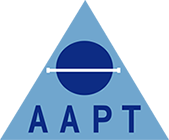News
MANAGING THE RISKS OF INFECTION IN THE MORTUARY, POST MORTEM ROOM, FUNERAL PREMISES AND EXHUMATIONS
TARGETED CONSULTATION ON HSE DRAFT GUIDANCE ‘MANAGING THE RISKS OF INFECTION IN THE MORTUARY, POST MORTEM ROOM, FUNERAL PREMISES AND EXHUMATIONS’
Background
HSE currently has two publications which provide guidance on compliance with health and safety legislation (in particular the Control of Substances Hazardous to Health Regulations 2002) as they relate to managing the risks of infection from the deceased. These are Controlling the risks of infection at work from human remains and Safe working and the prevention of infection in the mortuary and post mortem room. While the two documents are aimed at different audiences (the funeral industry; and healthcare post mortem facilities), several of the processes the industries undertake and the risks they are exposed to are similar and overlap. To ensure both guidance documents are consistent in their message and terminology, and address any gaps in these contiguous processes, it is sensible and proportionate to combine the two documents.
Guidance review
The following organisations, along with HSE, have been involved with reviewing and revising the guidance:
Association of Anatomical Pathology Technology
British Institute of Embalmers
British Institute of Funeral Directors
Coroners’ Officers and Staff Association
Health Tissue Authority
Home Office
National AIDS Trust
National Association of Funeral Directors
NHS
NHS National Services Scotland
Public Health England
Royal College of Pathologists
Proposed changes to guidance
There are three main elements to the changes to the guidance:
1. Policy – the revised guidance proposes a more proportionate and pragmatic approach to the safe handling (including embalming, post mortem examination) of the deceased with known infections (eg Human Immunodeficiency Virus, Hepatitis B virus and Hepatitis C virus).
2. Structure – combine two documents to provide guidance on controlling the risks of infection from the deceased and introduce a pathway of the deceased from death to burial or cremation and in some instances, exhumation. The pathway will provide a logical flow to the guidance and be colour-coded to ensure that readers are clear which parts of the guidance are relevant to them.
3. Content – the guidance has been reviewed and revised to reflect current work practices, workflow and tailored to specific activities (eg post mortem examinations, embalming). The guidance aims to address gaps in the existing guidance documents in relation to occupational health provision and the exchange of information between mortuaries/post mortem room facilities and funeral services. There has also been some changes to the terminology used throughout the document, the main changes include:
• The introduction of two new terms:
o Standard precautions - The minimum control measures that should be implemented to manage the risk of exposure from work activities involving the deceased.
o Transmission based precautions - These are control measures that should be implemented when the deceased are known or suspected to have an infection. These should be implemented, as required, in addition to standard precautions. Transmission based precautions are categorised according to their route of transmission of the infectious agent, ie airborne, droplet or contact transmission.
• A change to the term ‘high risk’ to ‘increased risk’ – The deceased which present an increased risk of infection to workers because of a known or suspected risk infection.
Business Engagement Assessment
The purpose of the Business Engagement Assessment (BEA) is to assess the impact to industry on any changes made to regulation or guidance. The focus of this BEA is the policy change on embalming. HSE Economists carried out telephone questionnaires with members of the stakeholder working group to gather information about the impact this change would introduce to the industry. HSE welcomes your comments on this BEA as part of this consultation.
Consultation
The consultation will open on 9 October 2015 and close on 20 November 2015. Unfortunately responses received after this date may not be considered. HSE is not able to respond to individual submissions.
Please provide any feedback on the guidance and BEA using the enclosed proforma and emailing to microbiologicalhazardspolicy@hse.gsi.gov.uk. Any queries relating to the consultation should also be directed to this email address.
